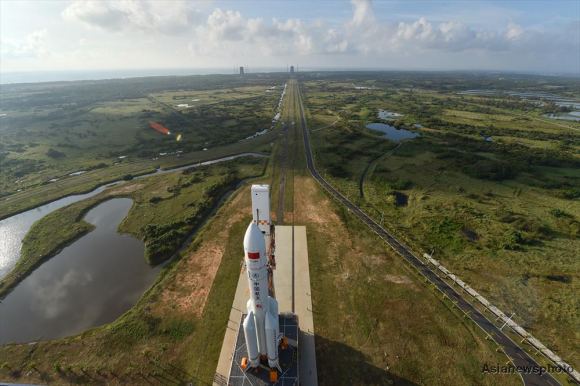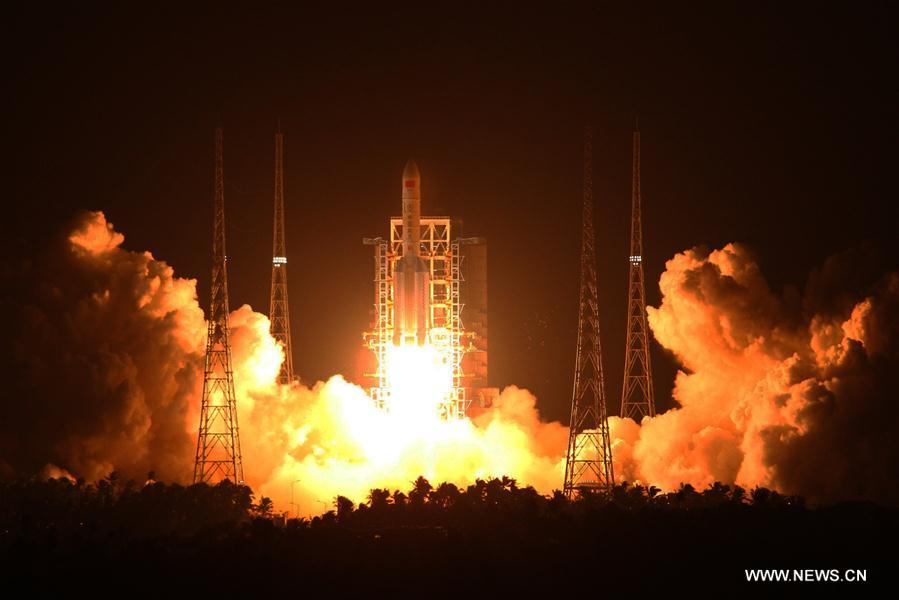In recent decades, China’s space program has advanced considerably. In addition to deploying their first space station (Tiangong-1) and developing a modern rockets (the Long March 5), the nation has also sent robotic mission to the lunar surface and plans to conduct crewed missions there in the coming years. To this end, China is looking to create a new series of rockets that will enable them to explore the Moon and maybe even Mars.
One of the rockets they use to accomplish these goals is known as the Long-March 8, which is expected to make its maiden flight around 2021. According to a statement made by the chief rocket designer (Long Lehao) during a recent space conference in Harbin, China, the rocket will also include a reusable first stage. This latest announcement shows that China is also pursuing reusable launch vehicles to lower costs and increase their presence in space.
According to the China Space Report, the Long March 8 (Changzheng 8, or CZ-8) is a medium-lift vehicle intended for Sun-Synchronous Orbit (SSO) missions – i.e. where payloads are delivered to a nearly polar orbit around a planet. Consisting of two stages and two boosters, this rocket will reportedly have a payload capacity of 3000 to 4,500 kg (6600 to 9900 lbs) to SSO.

The first stages on this rocket are believed to be based on the first-stage of the Long March 7, which are powered by two single-chamber YF-100, 1,200 kN-thrust engines fueled by LOX/kerosene. Based on Long’s statement, the first stages and boosters are expected to be retrieved through vertical landing (similar to SpaceX’s Falcon 9 and Falcon Heavy rockets).
However, according to Bao Weimin, the director of the Science and Technology Commission of the China Aerospace Science and Technology Corporation, the Long March 8 will use different technologies that those employed by SpaceX. The purpose of this rocket will be to provide commercial launch services to customers from around the world.
As Long indicated during the course of the conference (according to China Daily):
“China’s aerospace industry is making efforts to develop low-cost vehicles that can enter space rapidly to support future large-scale space exploration and promote a commercial space industry.”
In addition, Long also emphasized that China will be making efforts to address an ongoing problem with its younger Long March rockets, which is controlling where they fall. Currently, landing areas have to be are evacuated at every launch since these rockets rely on toxic chemicals. And with launches becoming more frequent, controlling where these rockets fall is becoming a major priority.

“As the current Long March 2, 3, 4 series rockets are fueled by toxic propellants, they cannot be recycled,” said Long. “But we are developing technologies to precisely control the fall of the rocket remains to ensure safety.”
Lastly, Long indicated what lies ahead for China’s space program and commercial spaceflight. By 2025, he claimed, reusable carriers will be developed for conducting suborbital space flights. By 2030, China National Space Agency will be conducting launches with rockets that rely on two reusable stages and will have achieved complete reusability by 2035. He also hinted how by 2040, China will be using reusable carrier rockets that will rely on hybrid-power sources.
All of this will allow for cheaper and more efficient launch services, facilitate spaceflight for private citizens, and allow for the commercialization of Low Earth Orbit (LEO). These goals are in keeping with what space agencies like NASA and private aerospace companies like SpaceX have in mind for the coming decades. In this sense, China is indicating that it intends to parallel other major powers in space by following a similar path.
Further Reading: China Daily

